researchers phil bell and eric snively (both based in alberta! i've met them back my in drum days, and their cool dudes) examined the theory that: dinosaurs found in prehistoric polar regions all must have migrated to and from these cold regions every year to take advantage of the abundant summer resources yet escape the harsh winters (harsh by mesozoic standards anyways).
they came to the conclusion that NOT all these dinosaurs had to leave the poles before the winter, and in fact many were adapted to thrive in the cold. among the key dinosaurs they used to prove this were new zealand ones!
now i admit before entering my palaeo FACT on this topic, it touches on a lot of other topics that i owe you people of the innerweb more palaeo FACTs on. please bear with that right now, and i promise someday i'll catch up to this point.
as for polar dinosaurs well...
 based on a number of dinosaurs found in places that during the cretaceous would have been in either the north or south poles, it has become clear that dinosaurs were not restricted to constantly warm environments as once was assumed.
based on a number of dinosaurs found in places that during the cretaceous would have been in either the north or south poles, it has become clear that dinosaurs were not restricted to constantly warm environments as once was assumed.
despite this fact, due to older scientific beliefs that dinosaurs were cold blooded it was originally believed that these polar dinosaurs must have only been visiting these colder regions in the summer as otherwise they wouldn't have been able to survive. this rule that all polar dinosaurs must have migrated hadn't been really challenged... until now... because modern thinking suggests, at least some, dinosaurs were warm blooded which would mean it is possible some might have been able to survive the cold.
locations in northern alberta, alaska, australia, and new zealand show a diverse range of dinosaurs (and other animals) lived in polar areas. among these dinosaurs were hadrosaurs (duckbills), ceratopsians (horned dinosaurs), ankylosaurs (armoured dinosaurs), iguanadonts, hypsilophodontids, sauropods, and theropods of varying sizes (large through small). this is quite a shopping list of dinosaurs, which led bell and snively to think they should look at each group of dinosaurs and evaluate their individual capacity for migration rather than make broad assumptions about them all. (Production Note: All maps are from Wikipedia)
now it is important to keep in mind that the world looked different in the cretaceous than how it does today (like this pic illustrates). clearly parts of the continents were in the polar circles like today (and unlike earlier in the dinosaurs rule of the earth). the migrations that these two palaeontologists were concerned with were the western north american and the australian ones (new zealand as we shall see is a special case). as you can see north america during this time was split into three chunks, of which both the western and northern could have been the place of migrations to the north pole. however as next to no dinosaurs have so far been found from the north sub continent nothing can be said about their behaviour at moment.
as you can see north america during this time was split into three chunks, of which both the western and northern could have been the place of migrations to the north pole. however as next to no dinosaurs have so far been found from the north sub continent nothing can be said about their behaviour at moment.
as for the western sub continent, it is one of the most understood palaeo regions in the world. the theory went that dinosaurs would wander up and down the continent from mid regions such as montana and alberta up to alaska throughout the year.
 similarly australia was a focus. though it was connected to antarctica (to form the last super continent of gondwana) little is known about cretaceous dinosaurs from antarctica (though there were almost certain some down there), and again nothing could be said safely about them till some are found.
similarly australia was a focus. though it was connected to antarctica (to form the last super continent of gondwana) little is known about cretaceous dinosaurs from antarctica (though there were almost certain some down there), and again nothing could be said safely about them till some are found.
dinosaurs have fortunately been found in southern australia which was much further south during this time than it is today. as you can see in the pic it dipped past the polar line. these dinosaurs have traditionally been thought to have migrated there from the north during their summer.
with these routes in mind lets look at the studies findings. one of the first dinosaurs bell and snively examined was the ever common edmontosaurus. using biomechanical predictions (which is fancy science talk for how they think edmontosaurus' body should have worked) bell and snively came to the conclusion these duck bills were very likely to be capable of making the long migrations up and down the western sub continent of north america.
one of the first dinosaurs bell and snively examined was the ever common edmontosaurus. using biomechanical predictions (which is fancy science talk for how they think edmontosaurus' body should have worked) bell and snively came to the conclusion these duck bills were very likely to be capable of making the long migrations up and down the western sub continent of north america.
_
they had several reasons to come to this conclusion.
though it may not have been the fastest dinosaur in running (which is of course short distance speed), edmontosaurus being such a large animal (13m long!) would have been able to easily cover long distances due to its long legs (which gave it a great long distance speed). even though this long journey would have burned a lot of energy, because it was such a big animal this was efficient energy use, as any moving around would use lots of energy anyways.
so the two palaeontologists thought it was reasonable to suspect that edmontosaurus could at least make the journey. whether it did make this whole trip or not, no one can be sure... at least from current evidence.

despite this the two researchers had similar findings for ceratopsians, at least in concept to edmontosaurs and other hadrosaurs (more research probably needs to be done on the different types of pachyrhinosaur, whether one is strictly polar and the other not or whether both turn up north and south). which is too say it is quite possible the ceratopsians could have made these migrations efficiently too, because they too were also large animals. this is supported by research coming from southern alberta in dinosaur provincal park (which was well out of the arctic circle in the cretaceous). there is strong evidence of ceratopsian migration in this region during this time.
this is supported by research coming from southern alberta in dinosaur provincal park (which was well out of the arctic circle in the cretaceous). there is strong evidence of ceratopsian migration in this region during this time.
ceratopsians are relatively rare in the dinosaur park formation, except in occasional layers where they are almost the only thing found... these ceratopsian packed layers have been found to be the aftermath of major disasters (probably a tidal wave or tropical storm) which trapped the majority of a herd of horned dinosaurs while they were in the area.
david eberth of the tyrrell has done extensive studies on these layers and disasters, and i will palaeo FACT about this research in more detail later, but they suggest that ceratopsians roamed in and out of dinosaur park throughout the year. meaning a lot of the time there would have been few or no horned dinosaurs about the place.
does this mean that the dinosaur park ceratopsians were wandering up to the north pole? maybe, for example a new pachyrhinosaur was found there in 2006, but it is just as likely (if not more so) that they were wandering up into the highlands to the west though.
in conclusion of their pro migration findings the research team noted that the larger the animal the more energy efficient it was for it to make this long journey. the bigger animals were not only more likely to have evolved migrational habits to take advantage of this fact, but they also would have benefited more off the food (aka energy) they'd gain by wandering up into the polar region.
they also noted that the bigger the animal the longer the wandering range. thus edmontosaurus being among the largest of duck bills had the longest range of the animals they looked at. most other hadrosaurs and horned dinosaurs would have had shorter ranges due to being smaller and having shorter legs.
the big finding here was that even the edmontosaurus (the dino they found with the longest range) had a much shorter realistic distance capability than previously thought! in the old scenario it was suggested that dinosaurs were wandering 9 times further than mule deer or 4 times those of wildebeest!!!
_
those were the pro migration findings though mind you...

(Production Note: Dromaeosaurid picture courtesy of Peter Bond)
in their study bell and snively showed there were a large number of polar dinosaurs that were extremely unlikely to be able to migrate.
smaller animals for example didn't work on the energy efficiency scale.
sure many of these smaller animals were pretty fast runners, but again that's short distance speed... they're not going to be sprinting the whole way from alberta to alaska. meaning that on their shorter legs that was a lot more effort to make the same distance as a longer legged animal. for example a dromaeosaur (like the one pictured above) would have had to take 4-8 steps for every single step an edmontosaur took. meaning that was 4-8 times the effort.
furthermore smaller animals need less food to get their energy needs. meaning they don't have to eat so much. if you eat less than you don't eat all the food in an area. large animals usually end up having to migrate naturally because they literally eat themselves out of a home, and have to go somewhere else where their food supply has been able to grow back from the last time they were there!

(Production Note: Ankylosaurid picture courtesy of Peter Bond)
they also found that some types of dinosaurs seemed to show up in these polar environments again and again. meaning there was probably a reason they were being always being found there.
bell and snively came to the conclusion these commonly found polar dinosaurs were probably adapted to living in the cold, and thus lived there year round (meaning they were more likely to die and fossilize in the poles). among these were ankylosaurids and hypsilophodonts in the southern hemisphere (i'm not certain of northern ones found in alaska... do any of my readers know?), and troodontids in the northern hemisphere (though based on partial remains in the southern it is quite likely there were polar adapted small theropods were down there as well).
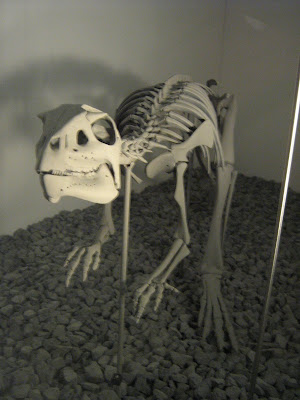 this stands to reason as one australian hypsilophodont leaellynasaura (the same species as my friends boom and rang) has been suggested as being polarly adapted already. this is due to leaellynasaura's huge eyes which would have been ideal for seeing in the darker months of the year (cause again at the poles sunlight varies to the extreme with the seaons!).
this stands to reason as one australian hypsilophodont leaellynasaura (the same species as my friends boom and rang) has been suggested as being polarly adapted already. this is due to leaellynasaura's huge eyes which would have been ideal for seeing in the darker months of the year (cause again at the poles sunlight varies to the extreme with the seaons!).
for both the north and south continents bell and snively suggest a model where the larger herbivores were migrating throughout the year to and from the pole, and then probably were followed by the larger carnivores. while the smaller animals were native to those environments and adapted to survive the harsher cretaceous winters (harsher compared to the winters of either the triassic or jurassic in any case).
the question someone old skool could ask the pair though to disprove their findings is: is there any proof of dinosaurs that couldn't migrate out of a polar region, and thus had to be surviving the winters? because maybe unlike modern land animals dinosaurs could make HUGE trips (which seems unlikely to be honest).
bell and snively had an immediate answer for this question. of course there was a place with dinosaurs who couldn't escape the winter. that place was new zealand!
 around 83 million years ago new zealand had separated from the greater super continent of gondwana and drifted into the southern pole (as you can KIND OF see on this map, sorry it was the best i could find that was copyright free. new zealand is just barely visible above its label in this particular map). meaning that any dinosaurs on new zealand during this time onward were trapped here with no escape from the winter each year.
around 83 million years ago new zealand had separated from the greater super continent of gondwana and drifted into the southern pole (as you can KIND OF see on this map, sorry it was the best i could find that was copyright free. new zealand is just barely visible above its label in this particular map). meaning that any dinosaurs on new zealand during this time onward were trapped here with no escape from the winter each year.
(Production Note: Theropod picture courtesy of Peter Bond)
of course as you'll know from reading my blog (hint hint people of the innerweb), new zealand did indeed have dinosaurs during this time! click here to read about the first lot i talked about, and to be honest i've been a naughty little t-rex and still owe you a palaeo FACT about the rest. stay tuned for this FACT soon!
so though we know little about the dinosaurs of new zealand, it hasn't stopped them from being a key part of palaeontological research and knowledge!_
if you'd like a great visual moving picture version of bell's and snively's findings the classic 5th episode of walking with dinosaurs "spirits of the ice forest" is spot on! which is impressive considering it was made almost 10 years before this research!
_



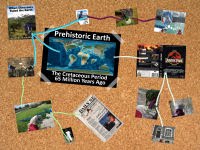


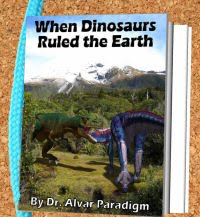


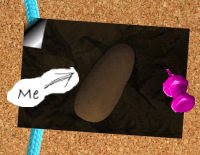
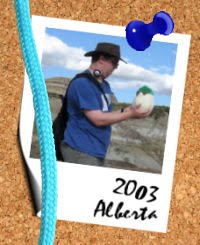




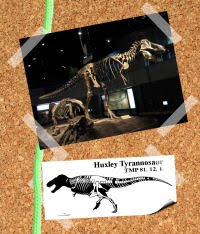








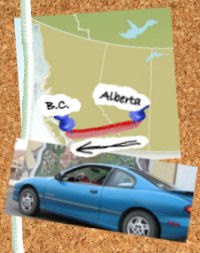
















3 comments:
Very interesting, traum. I learned something AGAIN today. I have posted on my blog again today. Um, I have seen that Walking with Dinosaurs episode and I agree 100% with you on this one. You might wanna mention Polar Allosaurus next time. Y'know the Early Cretaceous cousin of the "original" Allosaurid?
So, New Zealand might be the key!
Polar dinosaurs! I wonder what Gideon Mantell and all those dudes may have thought about all this stuff!
raptor- i didn't really mention the allosaur because i don't think it is one (and i was going to palaeo FACT about this in a while when i get around to aussie dinos).
the aussie allosaur is based on a SINGLE toe boe. this toe bone is nearly identical to an allosaurus, but this isn't nessacarily evidence of it being an allosaurus. one we have so little to go one, and second when this bone was found our understanding of southren hemisphere theropods wasn't very good. so the bone was IDed as an allosaur back than as it was the only similar theropod to compare it too.
we now know that the allosaurs family continued to evolve into the cretaceous and give rise to the carcharodontosaurids. as the majority of these lived in the southern hemisphere (giganatosaurus, mapusaurus, carcharodontosauus for examples). it stands to really good logic that the aussie toe bone is one of these allosaur relatives, but not a true allosaurid itself.
its similar to iguanadontids and hadrosaurs. lots of parts between them are extremely similar, and in a few cases identical. however when you have enough of both to compare they are different (yet clearly hadrosaurs evolved from iguanadontids)
dinorider- i have no idea what he'd think. in some ways i think he of those early guys wouldn't have been as surprised. i picture more the dudes around the 1900-1930's having the most trouble with it
Post a Comment